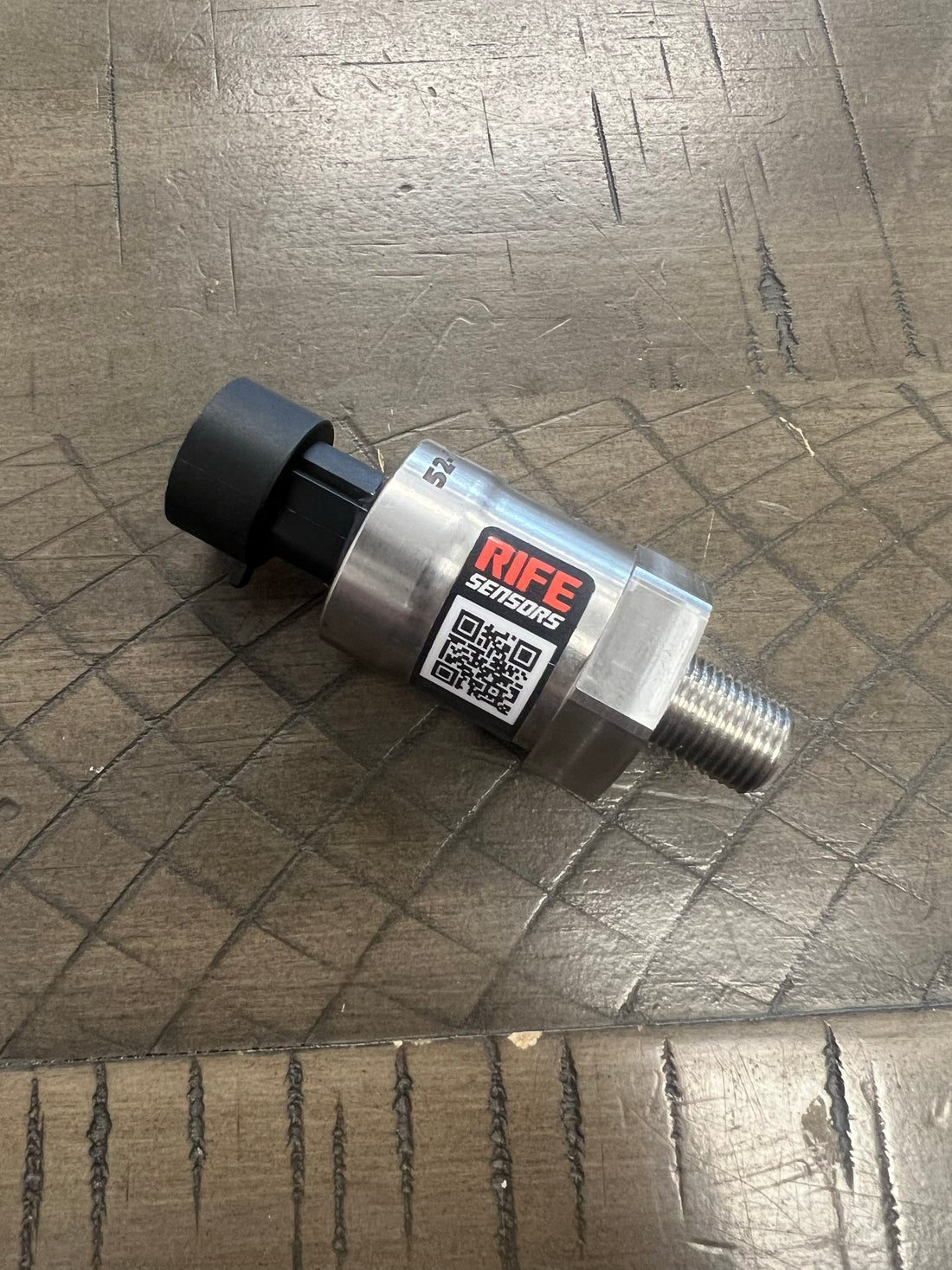So this is your first EFI setup? Or first turbocharged combination. With the rapid growth of forced induction and technology that goes along with it, the sensors and what is actually needed can be quite daunting. Lets face it, you don't do this for a living and the internet can be a very cloudy place for information. So we went ahead and put together the basics and then some "would be nice" below. We wanted to steer you right.
The Necessities:
Please note this list doesn't mention standard engine sensors such as coolant, oil pressure, tps, iac, etc as they are needed on any EFI engine.
Fuel Pressure:
Boosted applications utilize a boost reference style fuel system. This means that for every pound of boost, the fuel pressure regulator adds a pound of fuel pressure to overcome the boost in the intake in delivering enough fuel. Typically this sensor needs to be 100 or 150psi. This can easily be figured out by adding your base fuel pressure to the amount of boost you want to run. For instance 43.5 lb is a very common base pressure. If I am running 30 psi of boost I need atleast a 73.5 lb worth of fuel pressure sensor. You want to leave some wiggle room for growth an extreme instances. However, with some injectors and tuning styles base pressure may start much higher in order to maximize a fuel injector, etc. So if you are starting at 85 psi and adding 30 psi, you need a 115 so a 150psi sensor would be best. Keep in mind you do not want to go way too large on the sensor as the greater the max pressure of the sensor the lower the resolution is.
MAP Sensor:
This sensor monitors the vacuum and also positive (boost) pressure in your intake manifold. This lets your ECU know where in the table fueling needs to be. Factory cars that are not built with forced induction come equipped with a 1 bar map sensor which essentially measures vacuum up to a ceiling or ambient atmospheric pressure (no boost). This is of course not sufficient for boost. For this reason you will need a 3 bar minimum sensor which reads to 29 psi, 4 bar reads to 43.5 psi, 5 bar reads to 58 psi. Again do not put too large of a sensor compared to what you need as it reduces resolution and the ecu ability to react to small changes.
Wideband O2 Sensor:
This is essential as a reference for your ECU to operate off of for aftermarket ECU and as a reference for even factory style ECU that your tuner will tune off of. Note these are different than a factory style Narrowband sensor.
IAT sensor:
This one is often overlooked but needs to be there, be a good fast response sensor, and needs to be in the correct location. Factory Style IAT sensors as commonly used by big name EFI companies and sold by many retailers are SLOW response. This means that your engine may have intake air temperatures much higher than the sensor is reading, and your efi system is tuning to that wrong info. This is concerning and can cause many issues. As a little bit of a plug, we sell a fast response sensor that is 15x faster and 3x more accurate. These can be found HERE in a variety of sizes and plug styles. These sensors need to go post intercooler and should be in a place that is representative of the air going in the intake runner. For example between intake runners rather than at the back of the intake manifold where air does not flow past. Or in the intake tube.
Wastegate Dome Pressure Sensor:
Your wastegate acts as a regulator for boost. It opens to remove exhaust pressure pre turbo, and closes to add more in order to achieve a target amount of boost. This sensor is essential in effectively targeting and managing boost and mounts directly or taps in directly to the top of the wastegate dome where manifold or compressed (co2 or onboard air) is being applied. This sensor will tell the solenoids externally mounted whether they need to add more or remove pressure to hit their target. This one is very simple, however many psi of boost you are trying to achieve the sensor is typically needing to be no more than double that. So 30 psi of boost as a target, get a 100 psi sensor. While most times you add 5 psi of co2 to make 5 more pounds of boost, some combos may require 2 to 1 meaning 10 psi of co2. This double method gives a little leeway and cushion. A standard 100 psi sensor is perfect for this application. However, do not cheap out with an inexpensive or unreliable sensor in this location. If this sensor fails and reads low (pressure sensors typically read to zero or very low when they go bad), the solenoids will subsequently keep adding pressure to try to achieve the boost level creating extreme over boost situations.
If you made it this far you likely understand the importance of quality and highly accurate sensors that do not fail. We own RIFE sensors and manufacture these high quality and highly accurate sensors which are more durable for racing and automotive applications. Please give us a call or checkout our full sensor line at
https://www.motionraceworks.com/collections/rife-sensors
